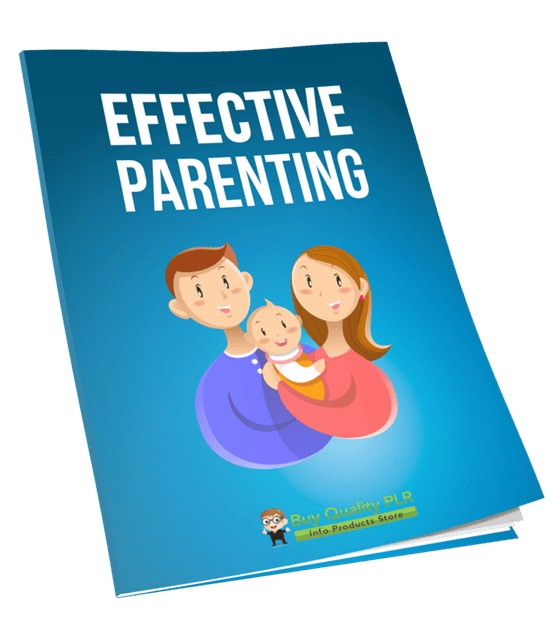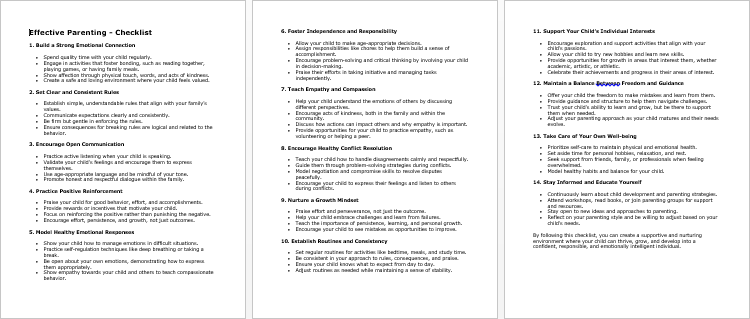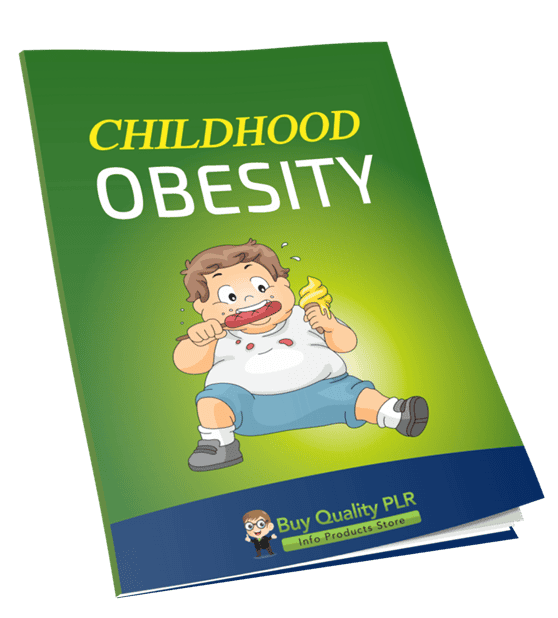
Effective Parenting PLR Course 33k words
in Kids PLR Ebooks , Parenting PLR , Parenting PLR Ebooks , PLR Checklists , PLR eBooks , PLR eCourses , PLR List Building Reports , Premium PLR , Premium PLR eBooks , Premium PLR Reports , Premium White Label Brandable PLR Coaching Courses , Private Label Rights ProductsChoose Your Desired Option(s)
has been added to your cart!
have been added to your cart!
#effectiveparenting #parentingtips #positiveparenting #parentingskills #plrcourse #plrcontent #parentingguide #childdevelopment #parentingstrategies #familywellness #parentingeducation
Effective Parenting PLR Course: Empower Yourself to Be a Thoughtful and Compassionate Parent
Welcome to your ultimate guide to becoming an empowered and thoughtful parent! Parenting is one of the most rewarding, yet challenging, journeys you will ever take. The Effective Parenting PLR Course is designed to provide you with practical, actionable strategies that will help you build stronger connections with your children, guide them through life’s challenges, and foster their emotional, mental, and physical well-being. Whether you’re a new parent or have years of experience, this course will give you the tools you need to parent with confidence, love, and wisdom.
Presenting…
Effective Parenting PLR Course 33k words
Course Overview: What You’ll Learn
Effective Parenting is a comprehensive course made up of five modules, each carefully designed to address crucial aspects of parenting, from understanding your child’s developmental stages to nurturing emotional intelligence and building a lasting bond with your child. With a total of 31,346 words of detailed, actionable content, this course offers step-by-step strategies that will help you become a more effective and mindful parent.
Course Structure: 5 Modules, 4 Key Themes
- Understanding Your Child’s Development
- Building Strong Communication
- Setting Boundaries and Expectations
- Nurturing Emotional Intelligence
- Fostering Independence and Responsibility
Module 1: Understanding Your Child’s Development
Parenting begins with understanding where your child is coming from—physically, emotionally, and mentally. In this module, we will cover how to recognize developmental milestones, acknowledge behavioral changes, and adapt your parenting style as your child grows.
Step 1: Learn the Stages of Child Development
Every child passes through various developmental phases. By understanding these stages, you’ll know what to expect at different points in your child’s growth. From infancy to adolescence, this module helps you tailor your parenting style to meet your child’s evolving needs.
Step 2: Recognize Emotional Needs
Children require love, security, and validation to thrive. You’ll learn how to recognize their emotional needs and address them in a way that fosters a healthy emotional development. From building self-esteem to teaching them how to regulate their emotions, this step will guide you in helping your child build emotional intelligence.
Step 3: Acknowledge Behavioral Changes
As children grow, their behaviors change. Puberty, social pressures, and environmental factors all play a role. Understanding these shifts is essential to responding appropriately as a parent. In this section, you’ll learn how to identify the factors behind behavioral changes and develop the tools to address them constructively.
Step 4: Adapt Your Parenting Style
The way you parent should evolve as your child matures. In this step, you’ll discover how to adjust your parenting approach to encourage curiosity, responsibility, and healthy habits. You’ll also learn how to foster independence while providing appropriate guidance.
Module 2: Building Strong Communication
Communication is at the heart of every successful relationship, and parenting is no exception. In this module, you’ll learn how to communicate effectively with your child to create a positive, open environment for mutual respect and understanding.
Step 1: Speak Their Language
Effective communication is about understanding and adjusting to your child’s level of comprehension. This step covers how to use age-appropriate language, tone, and body language to get your message across in a way that they can understand and relate to.
Step 2: Active Listening
Listening is just as important as speaking in communication. In this step, you’ll learn how to truly listen to your child without judgment, interruptions, or distractions. Active listening creates a safe environment where your child feels heard and understood, strengthening your relationship with them.
Step 3: Express Yourself Clearly
In this section, we discuss how to communicate your expectations clearly and consistently. You’ll learn how to express yourself with clarity, so your child understands what you need from them, while also fostering a respectful dialogue.
Step 4: Use Positive Reinforcement
Positive reinforcement helps to build your child’s self-esteem and encourages good behavior. Learn how to praise your child for their efforts, making sure that you acknowledge their hard work rather than just the end result.
Module 3: Setting Boundaries and Expectations
Children thrive in environments that are structured and predictable. In this module, you will learn how to set boundaries and create a system of rules that guide your child’s behavior while maintaining a loving, supportive relationship.
Step 1: Set Clear and Consistent Rules
The first step in setting boundaries is establishing clear rules that your child understands. In this section, you’ll learn how to create simple, understandable guidelines that align with your family’s values and goals. The consistency with which you apply these rules will help your child feel secure and understood.
Step 2: Explain the Why Behind Boundaries
It’s not enough to simply tell your child what is expected. They need to understand why these boundaries are in place. By explaining the reasons behind rules, you empower your child to make responsible choices on their own.
Step 3: Use Logical Consequences
Logical consequences are key to teaching accountability. This section will guide you in using consequences that make sense in the context of the behavior. You’ll learn how to apply them in a way that helps your child understand the impact of their actions.
Step 4: Be Flexible When Needed
Life doesn’t always go as planned, and flexibility is essential in parenting. This step teaches you when and how to adjust your rules and boundaries to accommodate unforeseen circumstances, while still maintaining a sense of order and fairness.
Module 4: Nurturing Emotional Intelligence
Emotional intelligence (EQ) is crucial to your child’s success in life. In this module, you’ll learn how to help your child manage their emotions, build empathy, and develop social skills that will serve them throughout their lives.
Step 1: Label and Validate Emotions
Emotional literacy is the foundation of emotional intelligence. In this section, we’ll guide you on how to teach your child to recognize, label, and validate their emotions, helping them develop a deeper understanding of themselves and their feelings.
Step 2: Model Healthy Emotional Responses
Children learn by observing the behavior of their parents. This step will show you how to model healthy emotional responses to stress, frustration, and conflict, teaching your child how to handle their own emotions with calm and resilience.
Step 3: Teach Empathy
Empathy is a vital skill that shapes how your child interacts with others. Here, we’ll show you how to foster empathy by helping your child recognize and respect other people’s feelings, laying the foundation for healthy, respectful relationships.
Step 4: Problem-Solving Together
Problem-solving is a key life skill. This section teaches you how to work through challenges with your child, empowering them to think critically and find constructive solutions to problems. By involving them in the process, you help them develop their ability to solve conflicts independently.
Module 5: Fostering Independence and Responsibility
In this final module, we focus on empowering your child to become an independent, responsible, and confident individual.
Step 1: Encourage Decision-Making
Let your child make age-appropriate decisions. In this step, you’ll learn how to guide your child in weighing the pros and cons of their choices and how making decisions strengthens their sense of autonomy and confidence.
Step 2: Assign Age-Appropriate Chores
Giving your child responsibilities is a great way to teach the value of hard work. Learn how to assign tasks that match your child’s age and capabilities, allowing them to contribute to the family and gain a sense of accomplishment.
Step 3: Support Problem-Solving
While you’re there to support your child, it’s important to let them solve problems on their own. This section will guide you in providing just the right amount of support to help your child grow in confidence without doing everything for them.
Step 4: Celebrate Efforts, Not Just Results
Recognizing effort, regardless of the outcome, is key to developing a growth mindset. In this step, we’ll show you how to celebrate your child’s hard work, which reinforces the value of persistence and learning through effort.
Conclusion: Becoming the Best Parent You Can Be
Congratulations! By completing the Effective Parenting PLR Course, you now have a wealth of knowledge and practical strategies that will help you raise emotionally intelligent, independent, and responsible children. Parenting is an ongoing journey that requires patience, love, and continuous learning. Keep practicing these strategies, embrace the process, and enjoy the beautiful adventure of raising your child.
Additional Resources Included
Along with the comprehensive course content, you’ll also receive these additional resources to help you implement your parenting strategies more effectively:
- Effective Parenting Checklist – 682 words
- Effective Parenting FAQs – 1,164 words
- Effective Parenting Sales Page – 872 words
These bonus materials will further support your parenting journey and help you stay on track as you implement the tools you’ve learned in the course.
How You Can Use and Profit from the Course
As a PLR (Private Label Rights) product, you have full rights to modify and resell this course as your own. Here are some ways you can profit from Effective Parenting:
- Sell the Course: Offer the course as an online course or downloadable ebook for parents looking to improve their parenting skills.
- Create a Membership Site: Use the course as part of a subscription-based model where users can access new content on a monthly basis.
- Bundle with Other Parenting Resources: Combine this content with other parenting materials you’ve created or found to create a more comprehensive package.
- Offer It as a Lead Magnet: Break up the course into smaller, free portions like blog posts or downloadable PDFs to grow your email list.
- Convert into Physical Products: Create a workbook, guidebook, or journal and sell it as a physical product.
- Convert into Other Formats: Transform the content into video, audio, or interactive material to engage your audience in different ways.
License Terms
What You Can Do:
- Sell the content basically as it is (with minor tweaks to make it “yours”).
- Break up the content into small portions and sell them as individual reports for $10-$20 each.
- Bundle the content with other existing materials to create larger product packages for $47-$97.
- Set up a membership site and generate recurring revenue.
- Convert it into a multi-week eclass and charge $297-$497 for access.
- Create physical products, like books or journals, for premium pricing.
- Convert the content to audio, video, or other multimedia formats.
- Excerpt or edit portions of the content to give away for free as blog posts, lead magnets, etc.
What You Can’t Do:
- Pass on PLR rights to your customers.
- Offer 100% affiliate commissions on any product that includes this content.
- Give the full content away for free. It must always be sold or excerpted/edited.
Start your parenting transformation today with the Effective Parenting PLR Course and empower yourself with the knowledge to raise confident, emotionally intelligent, and responsible children.
Act Now – Download Your Course and Begin Your Parenting Journey Today!
has been added to your cart!
have been added to your cart!
Here A Sample of Effective Parenting PLR Course
Welcome to your guide to becoming an empowered and thoughtful parent! In this course, we’ll explore practical strategies to build stronger connections with your children and guide them through life’s challenges with love, patience, and wisdom.
Module 1: Understanding Your Child’s Development
In this first module, we’ll lay the foundation for understanding where your child is coming from. Understanding their developmental stages is key to responding effectively to their needs.
Step 1: Learn the Stages of Child Development
Understanding the stages of child development is essential for effective parenting. As a course creator, it’s crucial to recognize the phases of growth that children go through and the typical milestones they will reach. This knowledge helps you tailor your parenting strategies to meet the developmental needs of your child, ensuring you support them in the most appropriate way at each stage.
Child development is a dynamic process that unfolds in various stages, each with unique physical, cognitive, and emotional milestones. In this step, we’ll dive deep into these stages, offering you the tools to better understand and address your child’s evolving needs. Understanding where your child is developmentally allows you to provide the right support, guidance, and love at every turn.
1. The Prenatal Stage (Before Birth)
The prenatal stage is the earliest phase of human development, beginning at conception and continuing until birth. Although you won’t be directly interacting with your child at this stage, understanding prenatal development is essential for recognizing the factors that influence your child’s early development.
Key Points:
- Physical Growth: The formation of essential organs and the rapid development of the nervous system occurs during this time. It’s also when physical characteristics such as height, weight, and features are determined.
- Prenatal Care: Parental health, nutrition, and the environment can have lasting effects on the child’s development. The care you provide during pregnancy sets the foundation for healthy early childhood growth.
Milestones to Recognize:
- In the first trimester, the heart, brain, and spinal cord begin to form.
- By the second trimester, sensory organs develop, and the fetus starts moving.
- In the third trimester, the baby’s lungs mature, and they gain weight in preparation for birth.
Understanding the prenatal stage gives you insights into the importance of early health practices and sets the stage for healthy parenting after birth.
2. The Infancy Stage (0-2 Years)
Infancy is a period of rapid physical and cognitive development. At this stage, babies undergo significant changes that lay the groundwork for future growth. Infants are incredibly dependent on their caregivers for physical and emotional needs.
Key Points:
- Physical Development: Infants grow quickly during this stage. Their motor skills, such as holding their head up, crawling, and walking, develop gradually.
- Cognitive Development: Infants begin to explore their environment, using their senses to interact with the world. They start recognizing faces, objects, and sounds.
- Social-Emotional Development: Attachment to primary caregivers is crucial. Infants start forming emotional bonds, which significantly influence their social and emotional development in later stages.
Milestones to Recognize:
- Newborn (0-2 months): Infants can focus on objects and make eye contact.
- 3-6 months: Babies begin to roll over and reach for objects.
- 6-12 months: They begin to sit up, crawl, and recognize familiar faces.
- 12-24 months: The child may start walking, babbling, and exploring more actively.
As a parent, it’s essential to provide a nurturing and responsive environment during this stage. Your care during infancy impacts your child’s emotional security, social bonds, and trust in others.
3. Early Childhood (2-6 Years)
The early childhood stage is marked by significant growth in language, motor skills, and social-emotional understanding. At this age, children begin to become more independent, and their personalities start to emerge.
Key Points:
- Physical Development: Fine and gross motor skills improve, allowing children to engage in activities like drawing, running, and dressing themselves.
- Cognitive Development: Language skills explode during this phase, and children begin to engage in pretend play. They start understanding cause-and-effect relationships and begin to develop problem-solving skills.
- Social-Emotional Development: This is the stage where children start to form relationships with peers, express emotions more clearly, and learn how to follow rules.
Milestones to Recognize:
- 2-3 years: Children begin to use simple sentences and ask questions. They develop autonomy and may begin to show signs of independence, such as dressing themselves.
- 3-4 years: They begin to engage in more complex pretend play and have a growing vocabulary.
- 4-5 years: Children improve their coordination and can perform tasks like skipping and balancing on one foot.
- 5-6 years: Children refine their social skills, and peer interactions become more important.
At this stage, it’s important to encourage your child’s independence while providing guidance. Praise and support their efforts as they navigate this stage of rapid change.
4. Middle Childhood (6-12 Years)
Middle childhood is a period of steady growth and development. Children’s cognitive, physical, and emotional skills become more advanced, and they begin to navigate more complex social interactions.
Key Points:
- Physical Development: Growth slows, but children gain greater coordination and strength. They improve their ability to engage in sports and other physical activities.
- Cognitive Development: Children begin to think logically and solve problems more effectively. Their ability to focus on tasks and engage in abstract thinking increases.
- Social-Emotional Development: Friendships become more important during this stage. Children begin to experience more complex emotions like jealousy and pride and are more attuned to social dynamics.
Milestones to Recognize:
- 6-7 years: Children become more independent in their schoolwork and begin to understand basic math and reading concepts.
- 8-9 years: They develop more sophisticated social skills and can work collaboratively in group settings.
- 10-12 years: Puberty starts to begin, and children experience significant cognitive advances, including the ability to think more abstractly and critically.
During this stage, the focus should be on developing skills such as time management, responsibility, and teamwork. Encourage your child’s academic and personal growth while providing structure and guidance.
5. Adolescence (12-18 Years)
Adolescence is a time of transition from childhood to adulthood, marked by significant physical, cognitive, and emotional changes. Teens seek independence, but they also face many challenges, both internal and external.
Key Points:
- Physical Development: Adolescents undergo puberty, which includes growth spurts, sexual maturation, and changes in physical appearance. Hormonal changes can affect mood and behavior.
- Cognitive Development: Adolescents develop the ability to think abstractly, form their own beliefs, and make decisions based on future consequences. They begin to question authority and explore new ideas.
- Social-Emotional Development: Peer relationships are critical during adolescence. Teens strive for independence while still needing parental support and guidance. Emotional regulation can be difficult due to hormonal shifts.
Milestones to Recognize:
- 12-14 years: Puberty begins, with noticeable physical changes. Teens start seeking more independence and may challenge authority.
- 15-17 years: Teens develop more advanced problem-solving and critical thinking skills. They may experiment with new identities and hobbies.
- 18 years: Young adults approach adulthood, seeking stable relationships, developing vocational interests, and making life-altering decisions.
During adolescence, it’s important to provide guidance while respecting your child’s growing need for independence. Keep communication lines open, help them navigate challenges, and support their journey toward becoming independent, responsible adults.
Conclusion
Understanding the stages of child development equips you with the knowledge to respond to your child’s needs effectively. By recognizing the physical, cognitive, and emotional milestones of each stage, you can tailor your parenting approach to provide the best support at every stage of their growth. As a course creator, this insight will help you create content that empowers parents worldwide to guide their children through each phase of life with confidence and care.
Step 2: Recognize Emotional Needs
As a course creator focused on effective parenting, one of the most critical aspects of child development to understand is the emotional needs of children. Emotional well-being plays a vital role in a child’s growth and ability to navigate the world around them. Meeting these emotional needs is not just about providing love and affection; it involves creating an environment that fosters security, trust, and emotional intelligence. Recognizing and responding to these needs can profoundly shape your child’s ability to build healthy relationships, develop resilience, and manage emotions as they grow.
Understanding a child’s emotional needs requires active listening, awareness, and a responsive approach. Every child is unique, and their emotional needs may vary depending on their stage of development, personality, and circumstances. By recognizing these needs and providing appropriate responses, you can guide your child toward emotional health and stability, helping them build the foundation for a successful and fulfilling life.
1. Create a Secure and Loving Environment
A secure, loving environment is the cornerstone of a child’s emotional development. Children rely on their caregivers to feel safe and protected, and this sense of security is essential for their emotional growth. When children feel loved and valued, they develop confidence in themselves and the world around them.
Key Points:
- Unconditional Love: Children need to feel loved without any conditions. Whether they succeed or fail, whether they make mistakes or excel, showing consistent affection fosters trust and emotional security.
- Physical Affection: Physical affection such as hugging, holding hands, or simply sitting close can provide comfort and reassurance, strengthening the emotional bond between you and your child.
- Consistency and Stability: Providing a predictable environment where routines are respected creates a sense of stability. When children know they can rely on their caregivers, they feel secure enough to explore the world and take emotional risks.
Action Steps:
- Spend quality time with your child every day, engaging in activities they enjoy.
- Respond to your child’s needs promptly and affectionately, reinforcing their trust in you.
- Set consistent routines for meals, bedtimes, and activities to create a stable environment.
By fostering a secure and loving environment, you help your child develop a sense of trust in both themselves and others. This trust is the foundation upon which emotional intelligence is built.
2. Validate Their Emotions
Children, especially younger ones, often experience emotions that they may not fully understand. As a parent, it’s essential to validate their feelings, showing them that it’s okay to have emotions and that their feelings matter. Validation helps children feel seen and heard, which is vital for developing emotional intelligence.
Key Points:
- Acknowledge Their Emotions: Whether your child is feeling angry, sad, excited, or frustrated, it’s crucial to acknowledge their feelings without judgment. Let them know that it’s normal to feel a wide range of emotions.
- Empathy: Show empathy by putting yourself in your child’s shoes. Reflect back what they are feeling and offer comfort. For example, if your child is upset after losing a game, say, “I know you worked hard and wanted to win. It’s okay to feel disappointed.”
- Modeling Emotional Expression: Children learn how to express emotions by watching their parents. Be mindful of your own emotional expression and show them healthy ways to express and manage their feelings.
Action Steps:
- When your child expresses an emotion, instead of dismissing it, try saying something like, “I see you’re feeling upset. Do you want to talk about what happened?”
- Avoid phrases like, “Don’t cry,” or “You shouldn’t be angry.” Instead, validate the emotion by saying, “It’s okay to feel angry. Let’s talk about what we can do when we feel upset.”
- Encourage your child to name their emotions by asking, “How are you feeling right now?”
Validating your child’s emotions not only helps them feel supported, but it also teaches them that emotions are a natural part of life and can be expressed in healthy ways.
3. Encourage Emotional Regulation
Emotional regulation is the ability to manage and respond to emotional experiences in an appropriate way. Helping your child learn how to regulate their emotions is a vital skill for building resilience and coping with challenges in the future. Children need guidance in understanding how to calm themselves when upset, as well as how to express their emotions constructively.
Key Points:
- Recognize Emotional Triggers: Help your child identify situations or events that trigger strong emotions, such as frustration or fear. Once they are aware of their triggers, they can start learning strategies to handle those emotions more effectively.
- Teach Coping Strategies: Equip your child with coping mechanisms such as deep breathing, counting to ten, or taking a break when they feel overwhelmed. These strategies give them tools to self-regulate in difficult situations.
- Praise Emotional Self-Control: Acknowledge and praise your child when they successfully manage their emotions. Positive reinforcement encourages them to continue practicing emotional regulation.
Action Steps:
- When your child is upset, guide them through calming techniques. For example, say, “Let’s take three deep breaths together,” or “Can we find a quiet space to calm down?”
- Role-play different scenarios with your child where they might need to regulate their emotions, such as dealing with frustration at school or losing a game.
- Create a “feelings chart” where your child can identify and express how they are feeling, using pictures or words.
By helping your child learn how to regulate their emotions, you empower them with the skills to cope with stress, disappointment, and frustration in a healthy way.
4. Foster Emotional Intelligence Through Communication
Effective communication plays a significant role in emotional development. Encouraging your child to talk about their emotions and listening actively when they do helps them develop emotional intelligence. This ability to understand and manage their own emotions, as well as the emotions of others, is key to forming healthy relationships and navigating social situations.
Key Points:
- Active Listening: Show your child that you are fully present and engaged when they express themselves. Make eye contact, nod, and repeat what they say to ensure they feel heard.
- Open-Ended Questions: Encourage your child to express their emotions and thoughts by asking open-ended questions such as, “How did that make you feel?” or “Can you tell me more about what happened?”
- Modeling Effective Communication: Children learn from observing their parents. When discussing your own emotions, use clear language and demonstrate respectful communication.
Action Steps:
- Create opportunities for your child to share their thoughts and feelings by regularly checking in with them. For example, ask, “What was the best part of your day?” or “What made you feel happy/sad today?”
- Use moments of conflict to model how to communicate emotions effectively, using “I feel” statements like, “I feel frustrated when…” to express your emotions without blaming.
- Encourage your child to name their emotions by saying, “I’m feeling a little sad today, how about you?”
By fostering an environment of open communication, you help your child build strong emotional intelligence, which in turn allows them to navigate social situations and relationships more effectively.
5. Teach Empathy and Compassion
Empathy and compassion are foundational components of emotional intelligence. Helping your child understand and care about the feelings of others encourages kindness and strengthens their social bonds. When children are able to empathize with others, they build meaningful relationships and develop the capacity for prosocial behavior.
Key Points:
- Model Empathy: Children learn empathy by watching adults. Demonstrate empathy in your daily interactions by acknowledging others’ feelings, showing understanding, and offering help when needed.
- Teach Perspective-Taking: Encourage your child to put themselves in someone else’s shoes. Ask questions like, “How do you think your friend felt when that happened?” or “What could we do to make them feel better?”
- Reinforce Compassionate Actions: Praise your child when they demonstrate empathy or compassion, such as comforting a friend or helping someone in need.
Action Steps:
- Read books or watch videos together that showcase characters demonstrating empathy and kindness.
- Discuss real-life situations where empathy was needed, such as comforting a sibling after they’ve been hurt or understanding a friend’s frustration.
- Encourage your child to express caring behaviors, like offering to help or checking in on a friend who is feeling down.
By teaching empathy, you not only help your child understand the emotions of others, but you also nurture a sense of compassion, which is key for developing emotional intelligence and maintaining positive relationships.
Conclusion
Recognizing and meeting the emotional needs of children is one of the most powerful ways to support their growth and development. By providing a loving, secure environment, validating their emotions, teaching emotional regulation, fostering communication skills, and nurturing empathy, you help your child build a strong emotional foundation. This not only helps them navigate their childhood but equips them with essential life skills that will serve them throughout their life.
As a course creator, these principles will be valuable in guiding parents from around the world. By empowering parents with these insights, you provide them with the tools to nurture their children’s emotional well-being and promote emotional intelligence. This leads to healthier, happier, and more resilient children, prepared to face life’s challenges with confidence and compassion.
Step 3: Acknowledge Behavioral Changes
As a parent, understanding and acknowledging the behavioral changes in children is crucial to fostering healthy development. Children go through various stages of growth, and each stage brings with it unique challenges and changes in behavior. From infancy to adolescence, children are constantly evolving, and their behaviors can shift as they experience changes in their physical, emotional, and social environments. These changes are often influenced by a variety of factors, such as hormones, peer pressure, school dynamics, family relationships, and personal growth. By recognizing and understanding these changes, you can respond with empathy and insight, fostering a supportive environment that helps your child navigate these challenges successfully.
As international course creators, it’s important to highlight how behavioral changes are a universal experience for children across different cultures, even though the specifics may vary. Understanding why children behave the way they do, and how to respond effectively, is a vital part of positive parenting. This step will provide you with strategies to recognize these behavioral shifts, understand their root causes, and respond in a way that supports healthy growth.
1. Understand the Developmental Stages and Associated Behavioral Shifts
Children’s behaviors often change in direct response to their developmental stages. Each stage of growth—whether it’s infancy, early childhood, middle childhood, adolescence, or beyond—comes with its own set of behavioral characteristics. For example, toddlers may show resistance as they assert their independence, while adolescents may experience mood swings due to hormonal changes. Understanding these developmental stages can help you better anticipate behavioral shifts and respond in a calm, knowledgeable manner.
Key Points:
- Infancy to Toddlerhood (0-3 years): During this phase, children are learning to express their emotions and desires. Expect behaviors such as crying, temper tantrums, and frustration when they cannot express themselves verbally. These behaviors are a way for children to communicate their needs.
- Early Childhood (3-6 years): Children begin to test boundaries and assert their independence. This can lead to behaviors such as defiance or resistance, particularly when they are expected to follow rules or instructions. Understanding this phase of testing boundaries can help parents respond appropriately without frustration.
- Middle Childhood (6-12 years): As children become more independent and start to form friendships, behaviors such as increased cooperation and a desire for autonomy may emerge. However, they may also experience peer pressure or begin to express anxieties about school or social dynamics.
- Adolescence (12-18 years): Teenagers experience significant hormonal and emotional changes that can result in mood swings, rebellion, and a desire for independence. Peer influence and societal expectations can also shape their behaviors. Understanding this stage can prevent misunderstandings and help guide your teen through this challenging time.
Action Steps:
- Familiarize yourself with the typical behaviors associated with each developmental stage. This helps you respond to behavioral changes with understanding and patience.
- Recognize that changes in behavior are normal and not necessarily a sign of bad parenting. Every stage has its unique challenges.
- Use age-appropriate strategies to respond to behavioral changes. For example, offer more independence to a school-age child, but maintain structure and consistency.
Understanding developmental stages allows you to anticipate behavioral changes and support your child appropriately through each phase.
2. Recognize the Impact of Hormonal Changes
Hormonal changes are a significant factor in children’s behavioral shifts, especially as they enter puberty. Hormones affect not only physical growth but also emotions, mood, and energy levels. These changes can result in mood swings, irritability, impulsivity, and changes in interests. During adolescence, hormonal fluctuations can make it difficult for children to regulate their emotions, leading to outbursts or emotional withdrawal.
Key Points:
- Puberty and Adolescence: Puberty is the period when children’s bodies undergo significant hormonal changes that prepare them for adulthood. These changes often lead to physical growth, sexual maturity, and emotional shifts. Adolescents may experience heightened sensitivity, mood swings, and a desire for privacy as they navigate these changes.
- Mood Swings: Hormonal shifts can cause sudden changes in mood, making children feel more irritable, sad, angry, or anxious without clear reasons. Understanding that these fluctuations are temporary and part of normal development can help prevent conflicts.
- Increased Emotional Sensitivity: Adolescents may react more intensely to situations that they would have handled calmly as children. This heightened emotional sensitivity can be influenced by hormones, which is why it’s important for parents to exercise patience during this time.
Action Steps:
- Be aware of the signs of puberty and hormonal changes, such as increased physical growth, voice changes, or the onset of menstruation in girls. These can often explain behavioral shifts during adolescence.
- Recognize that mood swings and irritability are common and not a sign of a deeper problem. Instead of reacting emotionally, try to stay calm and offer support.
- Create open lines of communication. Let your child know that it’s normal to feel a range of emotions, and encourage them to talk about how they’re feeling.
By recognizing the impact of hormonal changes, you can respond with empathy and understanding, rather than frustration or punishment.
3. Identify the Role of Peer Pressure and Social Dynamics
Peer pressure and social dynamics play an increasingly significant role in a child’s behavior, especially as they enter adolescence. Children are deeply influenced by their social environment and the desire to fit in with their peers. As children grow older, their behavior can be shaped by what their friends, classmates, or social media networks expect or model. Peer pressure can lead to behaviors such as risk-taking, defiance, or changing their interests or values to conform to group norms.
Key Points:
- Influence of Peers: Peer influence becomes particularly powerful in middle and high school years. A child may start to change their appearance, behavior, or attitudes to align with the norms of their peer group, even if these changes go against their previous behavior or values.
- Risk-Taking Behaviors: Adolescents are more likely to engage in risk-taking behaviors, such as experimenting with substances, skipping school, or engaging in rebellious acts, due to peer pressure.
- Social Media Influence: With the rise of social media, children are constantly exposed to the opinions and behaviors of their peers online. Social media can exacerbate feelings of inadequacy, jealousy, or a desire to conform to unrealistic standards.
Action Steps:
- Encourage your child to build strong, positive friendships with peers who share similar values. Be involved in their social life by engaging with their friends and being aware of their social circles.
- Have open discussions about peer pressure, helping your child learn how to resist negative influences and make decisions based on their own values.
- Monitor your child’s social media activity and discuss the potential impact of online interactions on their behavior and self-esteem.
Recognizing the role of peer pressure allows you to guide your child through the challenges of fitting in while maintaining their integrity.
4. Consider the Influence of Family Dynamics and Life Events
Children’s behaviors can also be heavily influenced by family dynamics, such as changes in the family structure, parental relationships, or major life events. Divorce, moving to a new home, the arrival of a new sibling, or even the loss of a loved one can trigger significant changes in a child’s behavior. These events can lead to feelings of stress, sadness, anger, or confusion, all of which can manifest in behavioral shifts.
Key Points:
- Parental Relationships: A child’s behavior can be directly influenced by the dynamics between parents. Conflict, inconsistency, or changes in parenting styles can create feelings of insecurity or anxiety in children.
- Life Transitions: Major life transitions, such as moving to a new city, changing schools, or the arrival of a new family member, can trigger behavioral changes. These transitions often cause children to feel unsettled or uncertain, which can lead to mood swings or regressive behaviors.
- Family Stress: Stressful family situations, such as financial struggles, illness, or a crisis, can lead to changes in children’s behavior. They may act out or withdraw, reflecting the stress they feel.
Action Steps:
- Maintain open communication within the family. Encourage your child to share their thoughts and feelings about any changes or challenges they may be experiencing.
- Create a stable and supportive environment at home, offering reassurance during times of family transition.
- Recognize signs of stress in your child and respond with understanding, offering them comfort and consistency.
By considering the influence of family dynamics and life events, you can provide the stability and reassurance your child needs during challenging times.
5. Respond with Understanding and Empathy
Once you’ve recognized the factors influencing your child’s behavioral changes, it’s important to respond in a way that acknowledges their emotional and developmental needs. Responding with empathy means recognizing that their behavior is often a reflection of what they are going through internally, whether it’s hormonal changes, peer pressure, or family stress. Rather than reacting with frustration, take the time to listen, validate their feelings, and provide appropriate guidance.
Key Points:
- Listen Actively: Allow your child to express themselves without interruption. Listening actively helps them feel understood and supported.
- Avoid Overreaction: It’s easy to react negatively to a behavioral change, but overreaction can lead to conflict. Instead, stay calm, assess the situation, and respond thoughtfully.
- Offer Support and Solutions: Once you understand the root cause of the behavior, offer support and practical solutions. This might involve providing additional emotional support, setting clear boundaries, or offering new coping strategies.
Action Steps:
- When your child exhibits challenging behavior, take a moment to assess the situation before responding. Ask questions like, “What’s going on?” or “How are you feeling?”
- Use a calm and measured tone when addressing behavioral issues. Avoid yelling or scolding, as this can escalate the situation.
- Work together with your child to find ways to address the behavior, whether it’s through better communication, setting new boundaries, or seeking professional help if needed.
Conclusion:
Acknowledge that behavioral changes in children are normal and often a result of physical, emotional, or social changes. By understanding these shifts and responding with empathy, patience, and clear communication, you can help your child navigate the complexities of growing up. Recognizing the various factors that contribute to behavioral changes—such as hormonal shifts, peer influence, and family dynamics—will allow you to be a supportive, effective guide through each stage of their development.
Step 4: Adapt Your Parenting Style
Parenting is not a one-size-fits-all approach. Each child is unique, and as they grow, their needs, behaviors, and emotional development evolve. One of the most important tasks of a parent is to adapt their parenting style to suit the specific needs of their child at each stage of development. Tailoring your approach ensures that you provide the right balance of support, freedom, and guidance at every age, which ultimately helps foster your child’s independence, curiosity, and well-being.
As international course creators, it is essential to recognize that while the core principles of parenting are universal, the way in which these principles are applied may differ across cultures, backgrounds, and individual family dynamics. This step will guide you through how to adapt your parenting style based on your child’s developmental stage, fostering an environment that encourages growth, independence, and healthy habits.
1. Understand Your Child’s Developmental Stage
The first step in adapting your parenting style is understanding where your child is developmentally. The needs of a 2-year-old are drastically different from those of a 12-year-old or a teenager. Children go through various stages of development, and as they grow, their physical, emotional, and cognitive capabilities change. A good understanding of these stages will help you determine the type of support and guidance your child requires at each point in their life.
Key Points:
- Infancy and Toddlerhood (0-3 years): During this stage, children are forming secure attachments, learning language, and exploring their immediate environment. They need clear, consistent boundaries but also ample opportunities for exploration and social interaction. Parenting at this stage is focused on nurturing and guiding through direct interaction.
- Early Childhood (3-6 years): Children begin to develop a sense of autonomy and learn about social dynamics. During this phase, their curiosity grows, and they begin to engage in imaginative play. Your parenting approach should encourage self-expression, independence, and socialization while also setting clear boundaries.
- Middle Childhood (6-12 years): School-age children are becoming more independent, refining their skills, and developing friendships. They are increasingly influenced by their peers and developing a sense of right and wrong. At this stage, your parenting style should shift towards providing guidance, fostering responsibility, and offering opportunities for independence within clear limits.
- Adolescence (12-18 years): Teenagers are navigating the complexities of independence, peer pressure, and identity formation. Their cognitive abilities are developing, and they are beginning to think critically and make their own decisions. Your parenting style at this stage should emphasize open communication, trust, and respect while maintaining boundaries and offering support in decision-making.
Action Steps:
- Familiarize yourself with developmental milestones at each age, and observe your child’s progress to understand their specific needs.
- Adjust your approach based on your child’s developmental stage, providing the right balance of support and freedom.
- Be flexible and open to adjusting your approach as your child grows and moves through different stages.
Understanding your child’s stage of development helps you tailor your parenting style to provide appropriate guidance and encourage growth at each phase.
2. Encourage Independence and Responsibility
As your child grows, one of the key goals is to foster independence and responsibility. Children are naturally curious and eager to explore the world around them. Encouraging independence helps children develop confidence, problem-solving skills, and the ability to manage challenges on their own. Your role as a parent is to create an environment that nurtures these skills while providing the right amount of support and supervision.
Key Points:
- Toddlers and Early Childhood: Encourage independence by offering choices in daily activities, such as picking out clothes or deciding between two snack options. Allowing children to make small decisions builds their confidence and sense of autonomy. At the same time, be patient with mistakes, as this is part of their learning process.
- Middle Childhood: As children gain more skills and knowledge, it’s important to give them responsibilities, such as tidying up their room, taking care of a pet, or completing homework independently. These tasks teach them accountability and the value of contributing to the household.
- Adolescence: Teenagers are ready to take on more significant responsibilities, such as managing their time, making decisions about their future, and learning to handle finances or part-time work. Encourage them to take ownership of their decisions and actions while providing guidance and support when necessary.
Action Steps:
- Provide age-appropriate responsibilities that encourage your child to act independently, such as letting a toddler put on their shoes or asking a teenager to manage their schoolwork.
- Foster decision-making by offering choices that are within your values and comfort zone. This encourages autonomy without overwhelming your child with too many options.
- Gradually increase the level of responsibility as your child matures, ensuring that you provide the right balance of support and freedom at each stage.
By encouraging independence and responsibility, you are preparing your child for adulthood by helping them develop the skills they need to navigate life with confidence and resilience.
3. Promote Curiosity and Learning
Curiosity is a natural part of childhood, and one of the best ways to foster a love of learning is to nurture your child’s sense of wonder and exploration. A parenting style that promotes curiosity helps children engage with the world around them, ask questions, and develop the skills to seek out knowledge. Encouraging a child’s intellectual curiosity not only enhances their academic performance but also supports their emotional and social development by fostering critical thinking and problem-solving skills.
Key Points:
- Early Childhood: Children in this age range are naturally curious about the world around them. Foster this curiosity by providing opportunities for exploration through play, books, nature walks, and hands-on activities. Engage in open-ended conversations where you encourage questions and offer thoughtful answers.
- Middle Childhood: As children enter school, their curiosity becomes more focused on specific subjects and hobbies. Encourage them to explore new interests and dive deeper into topics that excite them. Expose them to a variety of experiences, such as cultural activities, sports, or creative arts, to broaden their horizons.
- Adolescence: Teenagers are beginning to form their own opinions and interests. Encourage them to ask big questions, challenge assumptions, and engage with diverse perspectives. Support their learning journey by providing resources, mentorship, or opportunities to pursue their interests independently.
Action Steps:
- Engage with your child’s curiosity by exploring their interests together. If your child loves animals, take them to a zoo or research animal facts together. If they’re interested in space, help them find educational resources or local stargazing events.
- Provide access to books, art supplies, educational tools, and experiences that will encourage curiosity and creativity.
- Give your child the freedom to explore different subjects and activities. Support their interests, even if they differ from your own.
By nurturing curiosity, you create a lifelong love of learning that helps your child thrive academically and personally, preparing them for a future of success and fulfillment.
4. Foster Healthy Habits and Emotional Well-being
Promoting healthy habits and emotional well-being is critical to your child’s long-term health, both physically and mentally. A well-rounded parenting style incorporates not just academic growth but also the development of emotional intelligence, self-regulation, and healthy lifestyle choices. This includes promoting good habits such as eating well, exercising, getting adequate sleep, and managing emotions in a healthy way.
Key Points:
- Healthy Lifestyle Choices: Encourage healthy eating, physical activity, and adequate rest. Children need proper nutrition and regular exercise to grow and develop physically. Make sure they understand the importance of these habits and model them by engaging in these behaviors yourself.
- Emotional Well-being: Help your child understand and regulate their emotions. Teach them to recognize and express their feelings in healthy ways, such as through words or art. Encourage activities like journaling, mindfulness, or deep breathing exercises to support emotional well-being.
- Mental Health Awareness: Mental health is just as important as physical health. Encourage open conversations about emotions, stress, and mental well-being. Normalize seeking help when needed, whether it’s from a counselor, therapist, or trusted adult.
Action Steps:
- Make healthy lifestyle choices a family priority. Sit down for meals together, take walks, and engage in active games. Encourage your child to participate in activities that promote physical fitness.
- Teach your child strategies for managing their emotions, such as using “I feel” statements or practicing relaxation techniques.
- Create an open, supportive environment where your child feels safe to express their feelings and seek guidance when they are struggling emotionally.
By fostering healthy habits and emotional well-being, you are setting your child up for a lifetime of good physical health, emotional resilience, and mental strength.
5. Maintain Flexibility and Adaptability in Your Parenting Approach
A key aspect of adapting your parenting style is maintaining flexibility. What works for your child one year may need to be adjusted the next. As your child matures, their needs will change, and your parenting style should evolve accordingly. Being adaptable allows you to respond effectively to your child’s development and external challenges, such as changes in school, friendships, or family dynamics. Flexibility also involves adjusting your approach to fit the unique temperament and personality of your child, recognizing that every child is different.
Key Points:
- Flexibility with Age and Development: As your child ages, their needs and desires will change. Being flexible allows you to adjust your parenting approach to match your child’s evolving capabilities and emotional state.
- Adapt to Your Child’s Personality: Every child has a unique temperament, and your parenting style should reflect this. Some children may need more structure and guidance, while others may thrive with more freedom. Pay attention to your child’s responses to your approach and adjust accordingly.
- Respond to External Changes: Changes in the environment, such as moving to a new home or the arrival of a sibling, can impact your child’s emotional state and behavior. Be open to modifying your parenting techniques to help your child cope with these changes.
Action Steps:
- Stay observant of your child’s needs and be willing to make changes as they grow and develop.
- Check in with your child frequently to assess how they are feeling and whether they need more support or independence.
- Be open to adapting your parenting style when external factors, such as changes in school or family life, affect your child.
Conclusion:
Adapting your parenting style is one of the most important aspects of effective parenting. By understanding your child’s developmental stage, encouraging independence, fostering curiosity, promoting healthy habits, and maintaining flexibility, you can create an environment where your child thrives. Every stage of your child’s development presents new opportunities for growth, and by tailoring your approach to meet their needs, you will help them develop into confident, curious, and well-adjusted individuals.
We’re also giving these extra bonuses
Effective Parenting – Checklist

Effective Parenting – FAQs

Effective Parenting – Salespage Content

Package Details:
Word Count: 31 346 Words
Number of Pages: 116
Effective Parenting – Bonus Content
Checklist
Word Count: 682 words
FAQs
Word Count: 1164 words
Salespage Content
Word Count: 872 words
Total Word Count: 34 064 Words
Your PLR License Terms
PERMISSIONS: What Can You Do With These Materials?
Sell the content basically as it is (with some minor tweaks to make it “yours”).
If you are going to claim copyright to anything created with this content, then you must substantially change at 75% of the content to distinguish yourself from other licensees.
Break up the content into small portions to sell as individual reports for $10-$20 each.
Bundle the content with other existing content to create larger products for $47-$97 each.
Setup your own membership site with the content and generate monthly residual payments!
Take the content and convert it into a multiple-week “eclass” that you charge $297-$497 to access!
Use the content to create a “physical” product that you sell for premium prices!
Convert it to audios, videos, membership site content and more.
Excerpt and / or edit portions of the content to give away for free as blog posts, reports, etc. to use as lead magnets, incentives and more!
Create your own original product from it, set it up at a site and “flip” the site for megabucks!
RESTRICTIONS: What Can’t You Do With These Materials?
To protect the value of these products, you may not pass on the rights to your customers. This means that your customers may not have PLR rights or reprint / resell rights passed on to them.
You may not pass on any kind of licensing (PLR, reprint / resell, etc.) to ANY offer created from ANY PORTION OF this content that would allow additional people to sell or give away any portion of the content contained in this package.
You may not offer 100% commission to affiliates selling your version / copy of this product. The maximum affiliate commission you may pay out for offers created that include parts of this content is 75%.
You are not permitted to give the complete materials away in their current state for free – they must be sold. They must be excerpted and / or edited to be given away, unless otherwise noted. Example: You ARE permitted to excerpt portions of content for blog posts, lead magnets, etc.
You may not add this content to any part of an existing customer order that would not require them to make an additional purchase. (IE You cannot add it to a package, membership site, etc. that customers have ALREADY paid for.)
Share Now!












